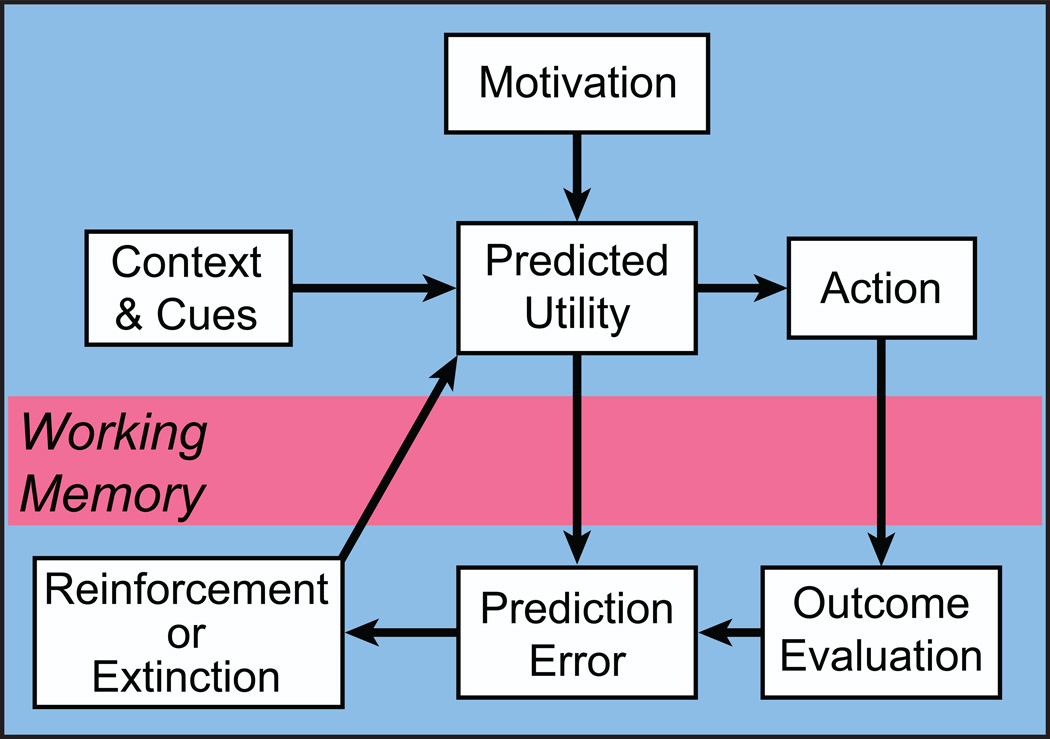Figure 1.
Deconstruction of reward. Reward can be conceptualized as a teaching signal that promotes future actions that have been experienced as beneficial at specific times and places. The teaching signal includes several processes occurring at different times. Animals are subject to a variety of motivations for specific outcomes that improve their survival and reproductive success. Along with motivation, detection of contextual cues inform the animal about the current value (and cost) of actions. This information leads to a predicted outcome and an action is selected. The outcome of that action is then evaluated and compared to the predicted utility. If the outcome is better than predicted, i.e. a positive reward prediction error, subsequent utility predictions are greater and the likelihood of the action taken is increased in future under similar circumstances. Working memory is involved in two ways: first, to compare the predicted and actual outcome and second, to reinforce the actions and contextual cues leading to the outcome.

